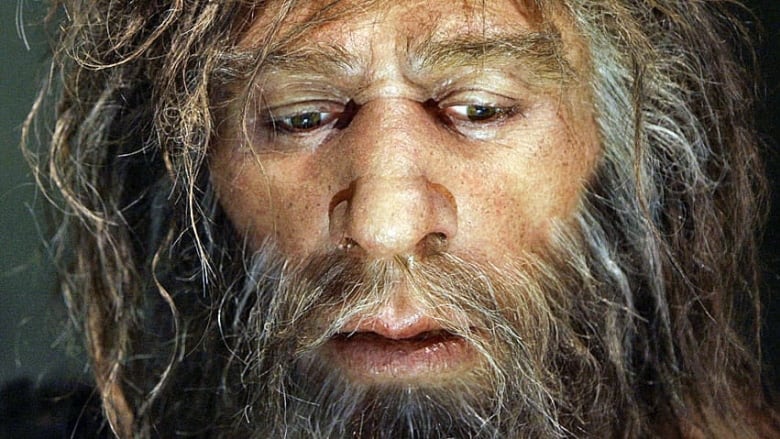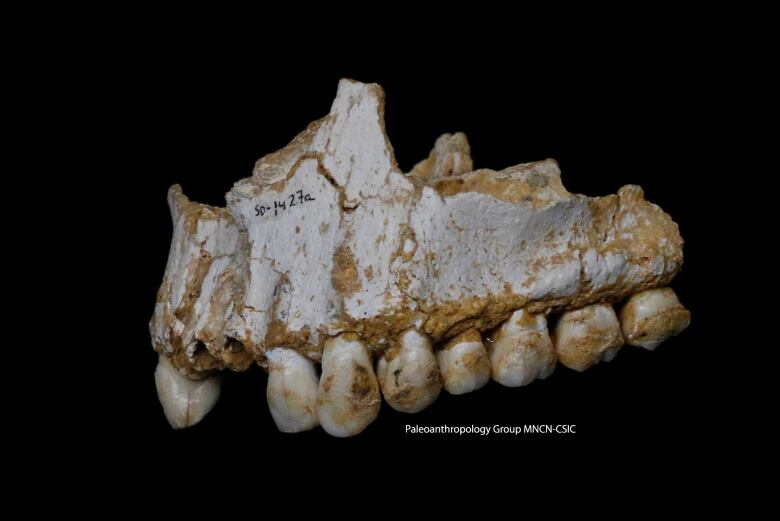Neanderthals likely self-medicated, new study suggests
Neanderthal teeth going back almost 50,000 years helped scientists make discoveries

Scientists studying plaque left on the teeth of Neanderthals dating back 50,000 years have made some surprising discoveries about our nearest extinct relative, one of which is that they seemed to have an understanding of medicine.
Researchers were able to collect plaque from the teeth of four Neanderthals from two sites one in Spy, Belgium, and the other in El Sidrn, Spain.
The samples, which are the oldest ever analyzed,range from 42,000 to 50,000 years old.
- Neanderthal, human interbreeding reveals mysterious migration
- Ancient human with close Neanderthal ancestor found in Romania
Among those foundat theElSidrnsite was a male who clearly suffered from an abscessed tooth. He also had an intestinal parasite that would have caused acute diarrhea.
In his plaque, researchersfound traces of poplar, which contains salicylic acid, a form of which is the active ingredient found in Aspirin. They also found traces of a mouldcalledpenicillium, whichhelped produce the first antibiotic, penicillin.

I think the fact that it's telling us a bit more detail, a bit more nuance about the behaviour sophisticatedbehaviour of our nearest extinct relative ispretty cool.- Keith Dobney, Simon Fraser University
While the poplar isn't considered edible,the researcherssaid theycan't prove definitively that the Neanderthal was ingesting it to relieve pain.
"But it seems like too much of a coincidence in that one individual,"said KeithDobney, whoco-authoredthestudypublished today in Natureand is anadjunct professor at SimonFraserUniversity.
Neither the Aspirin-like substance nor the penicilliumwould have been found on rotting fruit or vegetation, he noted.
"I'm happy with an explanation that at least these Neanderthals in El Sidrnhad some basic knowledge of medicinal plants and their applications and were potentially self-medicating, at least with poplar," saidDobney, who is alsoChair of HumanPalaeoecologyand Head of Department Archaeology, Classics and Egyptology at the University of Liverpool.
"I think the fact that it's telling us a bit more detail, a bit more nuance about the... sophisticated behaviour of our nearest extinct relative is pretty cool."
Varying diets
The researchers also found a difference in the diets between the two groups.
The Neanderthals in Belgium consumed woolly rhinocerosand European wild sheep, along with wild mushrooms. The Neanderthals in Spain, on the other hand, seemed to sustain themselves on a purely vegetarian diet, eating pine nuts, moss, mushrooms and tree bark. This shows that Neanderthals from different regions had very different diets.
The researchers also found a link between Neanderthals, ancient and modern humans and the microbes they possessed, including bacteria that causes gum disease and cavities.
They werealso able to reconstruct the oldest microbial genome yet, the results of which suggest that Neanderthals and humans shared pathogens as recently as 180,000 years ago.
Answers within the microbiome
Today, we brush vigorously and go to the dentist to have plaque removed. But in Neanderthal times, itremained on their teeth, thereby storing years of dietary information.

Our mouths are home to hundreds of microorganisms. These microorganisms form a type of ecosystem known as a microbiome in and onour bodies. Eachmicrobiomeisuniquebut sharessome commonalities with other people's microbiomes.
The study of microbiomes is a relatively new branch of science, but one with rich rewards. These microscopic organisms can reveal a lot about not only ourselves but also our surrounding environments.
Using this new branch of science, the researcherswere able to paint a picture of what our ancient relatives consumed.
Dobney isthrilled with the discoveries the team has made, but says he is most excited about their practical uses.
"Even though we've got some really great, detailed data on the Neanderthaldiet, we've got the capabilities now of exploring the evolution of these crucial ecosystems that exist nowhere else, that have evolved with us and are a part of who we are and that actually keep us alive and that is probably the coolest thing ever."












_(720p).jpg)


 OFFICIAL HD MUSIC VIDEO.jpg)
.jpg)



























































































